Form Follows Function: Manga That Match Your Format of Choice | Mondo Manga
With these manga, choose the right format for the right story.
 This seems like ancient history now, but one of the things that cemented the popularity of manga was format. Publishers who first brought Japanese comics to the American market did a lot of experimenting. Some colorized them and segmented them into monthly comics, while others kept them black-and-white but flipped the comics so they read left-to-right and published them as expensive graphic novels, often with a larger trim size than what we are accustomed to now. When Tokyopop started publishing “Sailor Moon,” they took the opposite tack, with inexpensive volumes in what was then the standard paperback format, about 4.25” x 6.5”.
This seems like ancient history now, but one of the things that cemented the popularity of manga was format. Publishers who first brought Japanese comics to the American market did a lot of experimenting. Some colorized them and segmented them into monthly comics, while others kept them black-and-white but flipped the comics so they read left-to-right and published them as expensive graphic novels, often with a larger trim size than what we are accustomed to now. When Tokyopop started publishing “Sailor Moon,” they took the opposite tack, with inexpensive volumes in what was then the standard paperback format, about 4.25” x 6.5”.
Then came the Big Bang of Manga: In the spring of 2002, Tokyopop announced that they would publish their manga in what they called the “authentic manga” format: 200-page volumes with a 5” x 7”
trim size. The black-and-white art was left unflipped, reading right-to-left, and sound effects were not translated. This meant they could price their manga at $9.99 per book and release new volumes every two or three months. The standard size also allowed them to create store displays that fit more of their books, allowing readers to find new series. Soon, Viz and other manga publishers adopted the format, which has remained the benchmark approach to this day.
Publishers have come up with plenty of variations, however. If a long-running series is selling well, the publisher will often reissue it in two- or three-volume omnibuses, and possibly as a deluxe hardcover with extras, such as a dust jacket and additional color pages.
They usually keep the lower-priced standard-sized volumes in print as well, particularly if the series is a best seller. Such Shonen Jump stalwarts as “One Piece” and “Naruto,” for instance, are available as three-in-one omnibuses, as well as the original individual volumes.
There are upsides and downsides to every format. Young readers may prefer smaller volumes with lower page counts, as they are easy to handle and quick to read. Avid fans of a series, on the other hand, might be happier with the deep dive a three-in-one omnibus provides, although it’s important to be aware that different formats may divide up a story in different ways. Hardcovers and deluxe paperbacks are handsome and often make for sturdier packages that are less susceptible to wear and tear. With many series available in multiple formats, it’s worth investigating the different possibilities.
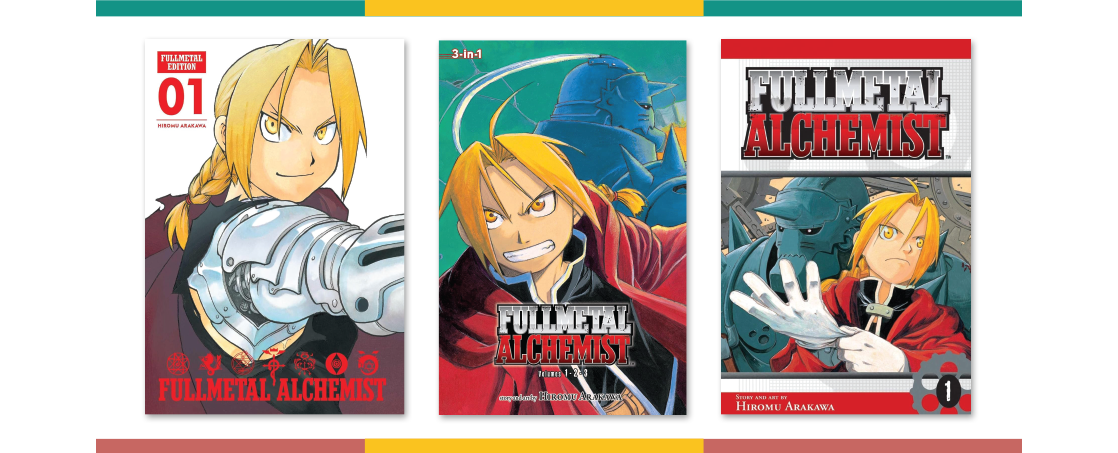
ARAKAWA, Hiromu. “Fullmetal Alchemist.” illus. by author. Viz.
Gr 8 Up– The story of the Elric brothers’ quest for the philosopher’s stone to restore their bodies remains popular, despite the manga’s original run ending over 20 years ago. Over the years, Viz has released this perennial series in three different formats: As 27 standard-size volumes, as nine three-in-one omnibuses, and as the 18-volume Fullmetal Edition. The originals and the three-in-one omnibuses are paperbacks with a standard manga trim size, while the Fullmetal Edition bundles one and a half volumes into each hardcover with a slightly larger trim size, roughly 6” x 8.”
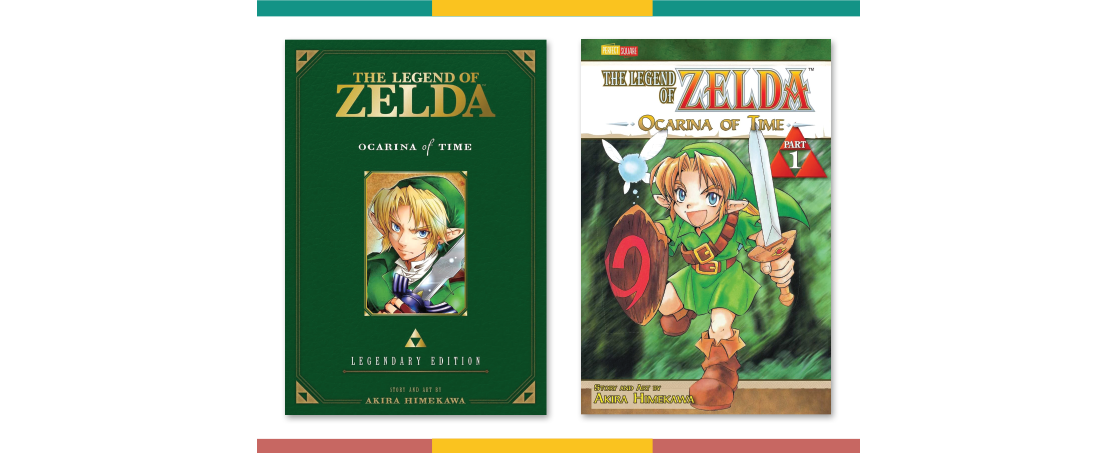
HIMEKAWA, Akira. “The Legend of Zelda: Ocarina of Time.” illus. by author. Viz.
Gr 3 Up–Based on the popular Nintendo video games, the story follows Link from his origins and details the destiny he’s meant to fulfill. Accompanied by the fairy Navi, he must find three spiritual stones and bring them to Zelda, the princess who rules over Hyrule. Viz’s manga comes in two different editions: The original consists of 10 single volumes, 200 pages each, priced at $11.99—a price that seems to indicate that Viz will keep these in print, as the standard price for a single volume went up from $9.99 to $11.99 in January 2024. Alternatively, the newer Legendary Edition bundles two of the original volumes into a single volume priced at $19.99. Beyond the cheaper price point, the Legendary Editions are very handsome, with a larger trim size, gold highlights on the cover, and color pages in the front. The Legendary Edition has a lot to recommend it, but younger readers may prefer the smaller size and more cartoony covers of the originals. Incidentally, don’t confuse this series with “The Legend of Zelda: Twilight Princess,” a sequel also from Viz and Himekawa that is darker and is rated for ages 13 and up.
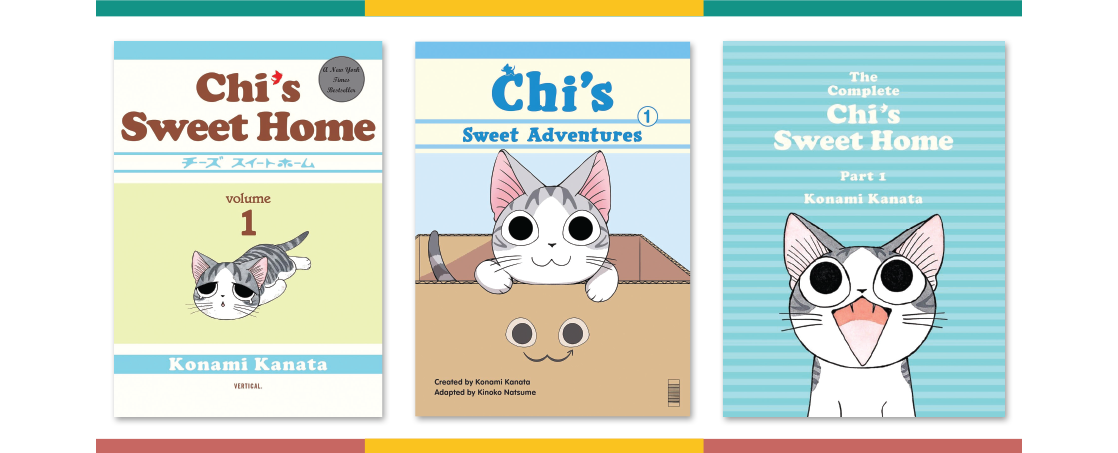
KANATA, Konami. “Chi’s Sweet Home.” illus. by author. Vertical Comics.
Gr 5 Up–This series, published left-to-right and in color, has been a kid favorite from the beginning. This funny and sweet story revolves around a kitten and the family that grows to love and adopt her. It was first released in English in 144-page volumes with a slightly smaller trim size than most manga, but those volumes all appear to be out of print. The 12-volume series is now available as four omnibus volumes with a larger trim size. They’re attractive, but at 480 pages per volume, may overwhelm some readers. Those readers may appreciate “Chi’s Sweet Adventures,” which is based on the animated series. Like the originals, these are in full-color and read left-to-right, but unlike the originals, these stories are formatted as four-panel gag manga (called 4-koma or yonkoma) that run vertically down the page. While the strips in each chapter still add up to a full story, having a punchline at the end of each one makes for a very different reading experience.
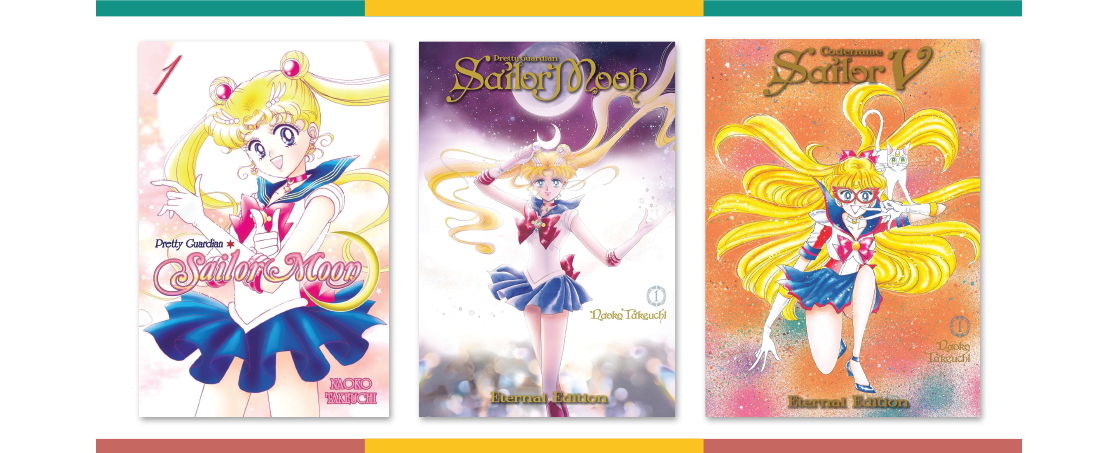
TAKEUCHI, Naoko. “Pretty Guardian Sailor Moon.” illus. by author. Kodansha.
Gr 8 Up–Sailor Moon was one of the very first manga to make it big in America. The original magical girl, Sailor Moon is an ordinary schoolgirl who transforms into a superhero and fights various enemies with the help of her friends, the Sailor Scouts. Starting in 1998, Tokyopop published 18 volumes in a small format similar to trade paperbacks, but those are long out of print. In 2012, Kodansha released a new edition, with a new translation, divided into 12 volumes, plus a two-volume prequel titled “Codename Sailor V” and two volumes of short stories. These also now appear to be out of print. Kodansha launched the deluxe “Eternal Edition” in 2018, which divided the series into 10 oversized volumes, each with 300+ pages and a 7” x 10” trim size, French flaps, new cover designs with a holographic coating, and a revised translation. The “Naoko Takeuchi Collection,” launched in 2022, is a less expensive version of the “Eternal Edition,” with the same content and page count but a smaller trim size and fewer flashy covers.

TORIYAMA, Akira. “Dragon Ball” and “Dragon Ball Z.” illus. by author. Viz.
Gr 8 Up–Goku, a monkey-tailed young martial artist, is enlisted by scientific adventurer Bulma as she attempts to locate seven “dragon balls” to be granted a wish. This manga was originally released in Japan under the title “Dragon Ball,” and it was adapted into two anime series, Dragon Ball and Dragon Ball Z.Viz divided the manga series to match the anime, publishing the first 16 volumes as “Dragon Ball” and the other 26 as “Dragon Ball Z.” In 2008, they launched the VIZBIG Edition, three-in-one omnibuses with a slightly larger trim size, a format known as “wideban” in Japan. In this configuration, “Dragon Ball” was five volumes and “Dragon Ball Z” was nine. Then in 2013, they published another three-in-one omnibus edition, with different covers and the standard 5” x 7” trim size, and this time all 14 volumes were simply titled “Dragon Ball”—no Z. Starting in 2014, they published two of the story arcs, the Saiyan Arc and the Freeza Arc, as full-color, 200+ page volumes with a 6.5” x 10” trim size that’s closer to an American comic book than most manga. Because this series continues to be popular, Viz has also licensed “Dragon Ball Super,” which is ongoing. This “midquel” is written by Toriyama (although that will change as he recently passed away) and illustrated by Toyotarou.
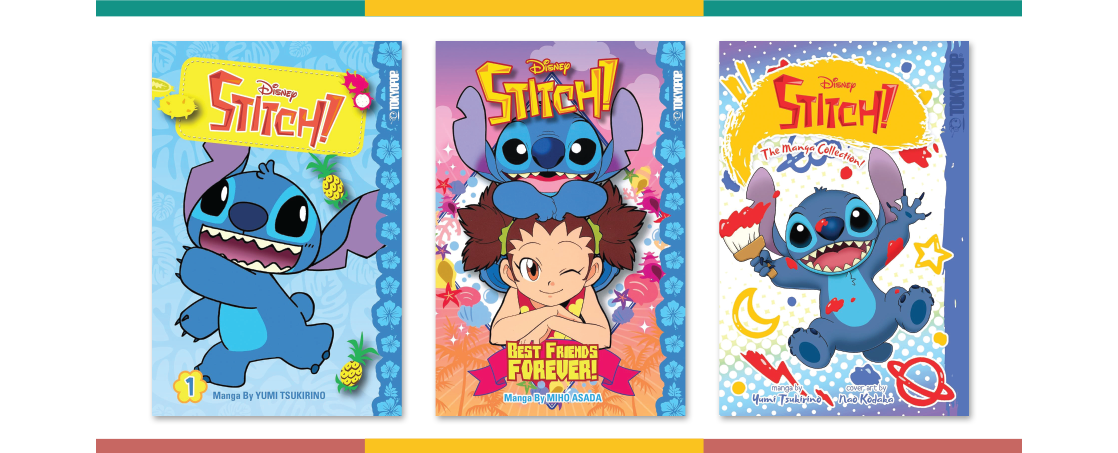
Tsukirino, Yumi. “Disney Manga: Stitch!” illus. by author. Tokyopop.
Gr 1 Up–This series takes the character Stitch from the movie Lilo & Stitch and puts him and some of his sidekicks into a new setting—a Japanese island near Okinawa, where he meets a new friend named Yuna, a girl who loves karate. Tokyopop published two individual volumes and then combined them in Disney Manga: Stitch! The Manga Collection, which came out in 2024. A third volume, Disney Manga: Stitch! Best Friends Forever, published in 2017, is not included in the omnibus but is available separately.
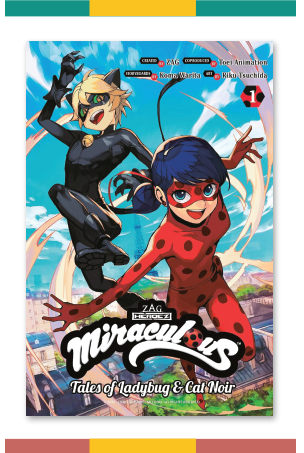
WARITA, Komi. “Miraculous: Tales of Ladybug & Cat Noir.” illus. by Riku Tsuchida. Kodansha.
Gr 3 Up– Two Parisian teenagers, Marinette and her classmate Adrian, are secretly superheroes in this action-heavy series that blends school drama, romance, and caped crusaders. Based on a French animated series, this manga adaptation was originally published by Kodansha in three 176-page volumes, and they have just announced a three-in-one omnibus for release in late 2025.
Brigid Alverson founded and edits the “Good Comics for Kids” blog.
RELATED
The job outlook in 2030: Librarians will be in demand
The job outlook in 2030: Librarians will be in demand
ALREADY A SUBSCRIBER? LOG IN
We are currently offering this content for free. Sign up now to activate your personal profile, where you can save articles for future viewing






Add Comment :-
Be the first reader to comment.
Comment Policy:
Comment should not be empty !!!